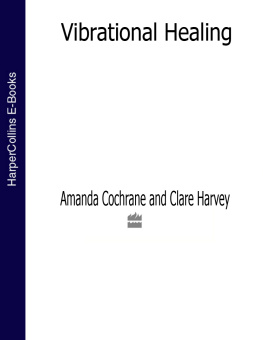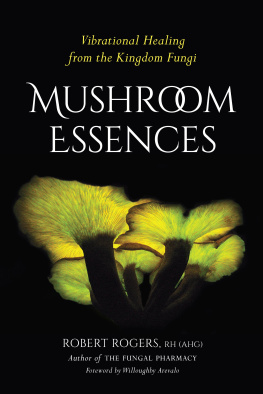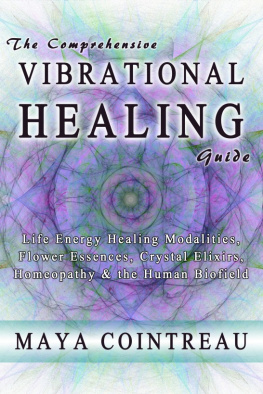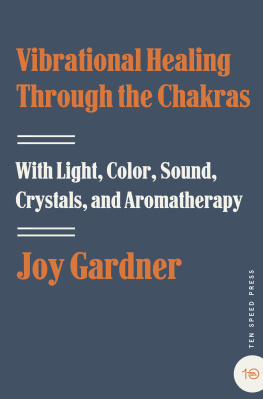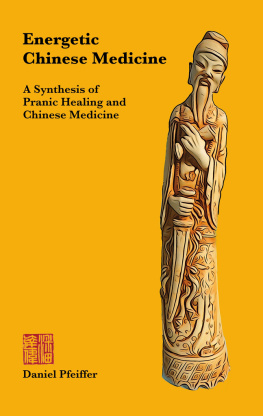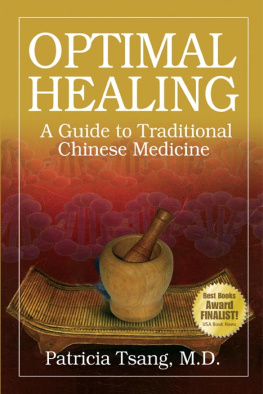To all who seek healing of body, mind, and spirit this book is sincerely dedicated.
May they find peace, love, joy, and a deeper respect for the divine spirit within.
T HERE ARE MANY individuals who have contributed in various ways to the birthing of this book. I wish to thank the many unsung pioneers of healing research and vibrational medicine who have paved the way through their tireless efforts to find better ways of healing human suffering. Although a great number of these individuals were misunderstood or cast as heretics by mainstream science during their own lifetimes, it is only now that we have acquired the wisdom to truly understand the value of their work. While many of these scientists, healers, and researchers have been mentioned in these pages, there are still countless others whose names do not appear but whose work and writings are equally important. Without their pioneering efforts, this book might not have been possible.
I wish to thank Joann Davis of Eagle Brook and William Morrow for convincing me to create a self-help guide to vibrational healing approaches that would be more accessible to all people.
While my first book, Vibrational Medicine, sought to teach the scientific principles underlying this futuristic energetic healing approach, the level of technical information presented there was sometimes a bit more than some could handle. Through Joanns feedback and constructive comments on my outline, she helped me to create the kind of book that I believe will bring healing and spiritual awakening to many more people who seek a better way.
A very special thank-you to Caroline Myss for allowing me to use so much of her material and insights into the energetic and emotional/spiritual dynamics of the chakras and woundology. Her original clairvoyant observations are of critical importance to understanding the origins of health and illness from a spiritual perspective.
I also wish to thank my wife, Lyn, for her patience, love, and understanding and the many hours she spent typing and retyping corrected pages of my manuscript. Without her support, this book would not have been possible.
Also, I wish to acknowledge all of the countless teachers and guides who helped to direct me along the path of exploration and discovery that has helped to make this book a reality.
Contents
Major Differences Between Conventional Medicines and Vibrational
Medicines Worldviews
The Various Forms of Bioenergy in the Multidimensional Human Being
The Many Varieties of Chi Energy (According to Traditional Chinese Medicine)
The Major Chakras and Their Physiologic and Psychospiritual Associations
The Various Approaches to Homeopathic Prescribing
The Chinese Law of the Five Elements and Their Correspondences
The Inner and Outer Bach Flower Remedies (According to Kramer)
The Therapeutic Actions and Subtle-Energy Associations of Color
The Many Dimensions of Magnetism: A Glossary of Terms and Energy Effects
The Many Varieties of Geomagnetic and Geopathic Stress
Possible Magnetic Mechanisms of Healing
The Many Forms of Magnetic Therapy
Basic Principles of Radionics
Possible Information Pathways in Radionics and Radiesthesia
The Strange Case of the Electronic Reaction of Abrams and the Evolution of Radionic Instruments
A Typical Radionic Diagnostic and Healing Procedure
W E LIVE IN interesting times. The nature of health care is shifting dramatically as we approach the end of the twentieth century. The rapid growth of technology and science has made a great impact upon health care by changing the way medicine is practiced and even altering our views of what makes human beings healthy or sick. But modern medicine sometimes falls short of solving our health problems. Is this failure the fault of modern medical science, or is it perhaps a reflection of our still not fully understanding the nature of chronic disease? Sometimes it seems todays medical science is so sophisticated that we should already have all the answers to the questions of healing illness and staying healthy. We keep pumping millions and millions of dollars into medical research, yet progress in healing many of the chronic illnesses of our times can be very slow. Are scientists asking the right questions about health and illness? Or are they locked into a medical model that is behind the times?
This book focuses on just such questions, especially with regard to the outdated model of medicine to which many health-care practitioners still subscribe. There is a kind of cultural bias, a scientific ethnocentrism, if you will, tending to follow research only in the mainstream sciences. Perhaps this reflects the fact that scientists are still people, with personal biases, egos, political affiliations, economic needs, and personal belief systems. And scientists, just like people everywhere, are slow to accept change. In our culture, one of our biases is that newer information and techniques are always better than older belief systems and technologies. Doctors often dismiss older medical approaches as outdated and useless. For example, many physicians dont fully appreciate that the roots of modern pharmacology lie in the older approaches of herbal medicine and homeopathy. Most doctors would rather prescribe a synthetic derivative of an herbs active ingredient than give the patient an herbal capsule, even if the two possess similar therapeutic action. Modern scientists assume that older approaches are too outdated to be valuable. However, mounting evidence supports a variety of ancient healing systems based upon views of physiology very different from the current mainstream healing paradigm. Perhaps revisiting ancient wisdom may supply important missing information that could result in a revolution in the field of medicine and healing.
Ancient approaches to understanding disease and body healing often viewed illness from the perspective of the human spirit, or the bodys life-force energy. These somewhat mystical viewpoints may now hold the key to understanding why people become ill and how they can regain their health. Yet modern medicine tries to distance itself from ideas of spirit and life energy. Mainstream healers long ago gave up the belief system referred to as vitalism or the theory of vital energy. But is vitalism really such an outdated concept when we begin to factor into the human equation some of the newer discoveries in the field of quantum and Einsteinian physics that describe the underlying energetic nature of the physical world? Our understanding of the very structure of the physical body, when viewed from the subatomic level of our molecular makeup, has recently led many scientists and leading-edge thinkers to believe that human beings are more than just biological machines with parts that age and wear down. If we were just sophisticated machines, we might very well need only a better knowledge of replacement parts and techniques for biological engine retuning in order to heal from illness and the ravages of time. However, the model of humans as mere biomachines has not led doctors to the anxiously awaited breakthroughs in healing that the chronic diseases of our modern industrialized societies require.
A number of pioneering researchers in science and medicine are embracing a blended worldview of healing that combines the best of ancient and modern viewpoints of the human body and the varied approaches to achieve wellness. This book is an exploration of some of the ideas gradually working their way into the mainstream of medical thinking. They differ from the current model of medicine. Whereas the existing worldview of medicine sees the body as a great clockwork machine of biological gears and parts, the new worldview of healing sees the body as a complex energy system. The present worldview of medicine sees illness as something that happens to people because of exposure to an infectious bacterium or virus, a trauma to the body, a toxic chemical ingestion, or an inherited abnormal gene. The new paradigm of healing digs deeper into what makes us holders of disease. Our current worldview of medicine does not consider consciousness to be an important causative factor in illness but, instead, merely a by-product of the neurochemical and electrical reactions in a persons brain. In the old school, consciousness was seen not as a cause but as something that was affected by a persons state of illness. True, the existing medical model recognized that being chronically ill could make someone feel depressed, but depression was never seen as playing a contributing role in bringing about physical illness. Newer insights gleaned from research into the effects of emotional stress on the body and its potential to inhibit the bodys immune system are gradually affecting medicine, though. As the reader will see, stress, consciousness, and our attitudes toward life play key roles in the new world theories of who becomes sick and who stays well. Just exactly how consciousness and the human spirit affect our susceptibility to illness by enhancing or inhibiting our natural immune defenses is a complex subject, but it is one we will endeavor to tackle in the pages of this book.



